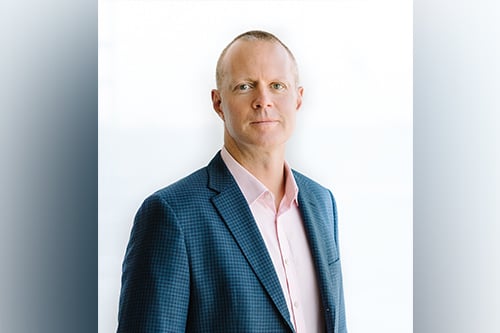

Things are turning around at Aviva Canada. After 18 months of “really tough action” and “hard conversations” for the insurer’s significant broker force, the firm finally has something to celebrate – at least in a calm, ‘pat on the back’ sort of manner.
In Aviva Plc’s first half (H1) financials released on Thursday (August 08), the Canadian unit reported an operating profit of $171 million, a dramatic improvement from the negative $22 million reported in the same period last year. Furthermore, Aviva Canada achieved a general insurance combined operating ratio (COR) of 97.5%, a dramatic improvement to H1 2018’s 104.6%, and much closer to the Group’s target range of 94-96%.
“I think we’ve delivered a set of results in the first half that show we’re in a really good and healthy condition,” said new Aviva Canada CEO, Jason Storah (pictured), who took the leadership reins in June 2019. “We’re certainly healthier than we were a year ago, which is clear through our combined operating ratio of 97.5%, and we’ve had a really positive trajectory through the first six months of the year.
“We’ve had to take a lot of really tough actions to get to this point. We know that’s involved some really tough conversations with our brokers and our customers, and that hasn’t been easy. But, Canadian consumers need insurance companies to be healthy. That doesn’t mean insurance companies making lots of money; it means insurance companies making reasonable margins. We need a healthy industry which is made up of companies with positive results trajectories, like ours.”
A lot of the “tough action” Storah is referring to has been in the personal auto space, a notoriously challenging line of business across Canada. The insurer has taken a hard line on some of its pricing and underwriting risk selection, especially in areas where it hasn’t been able to get the desired rate. In some instances, Aviva Canada has even required brokers and customers to fill out paper applications, which Storah admitted “is never a popular thing.”
“It’s certainly not a process we wanted to put in place, but in the absence of regulators allowing us to file rate applications, we needed to put some other actions in place,” Storah told Insurance Business. “The good thing is, we’ve started to dial back on those actions, because in areas where we were missing rate, we’ve subsequently been able to get it. We’ve been able to ease off on our underwriting filters [and other restrictive actions] which is fantastic. No insurance company wants to put filters in place; we want to be able to charge the premiums we believe are the right premiums in the first place.”
In the past 18 months, Aviva Canada has also placed renewed focus on its technical pricing models, risk selection, data analytics and its claims operations. After all, “no insurance company can do well and best the competition without a really effective claims operation,” Storah pointed out. The CEO admitted the insurer’s claims operation has not always been where it needs to be in terms of efficient indemnity management and great customer service, but he added that it’s looking a lot healthier than it was 12 to 18 months ago.
“The largest part of Aviva Canada’s business is through our brokers. We have a thousand broker relationships that we really value,” Storah added. “We know the last 12 to 18 months has been tough, and we know there have been areas where our service, our underwriting criteria, and our pricing hasn’t been good enough – and that’s been tough for our brokers, who’ve had to have some hard conversations with their clients.
“But Aviva is unwavering in our commitment to the broker channel. We are absolutely committed to our brokers growing and becoming more successful, because a healthy broker market means a healthy insurance market overall. I want to thank our broker partners in Canada for working with us and for being vocal about the things they do or don’t like about moves we’ve made. I really appreciate all of the hard work we get from our brokers across the country because they drive the largest part of Aviva’s business.”
